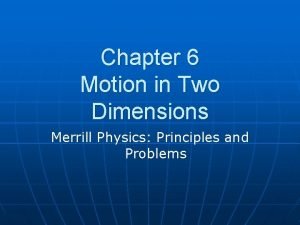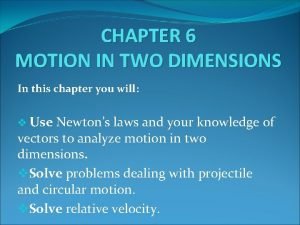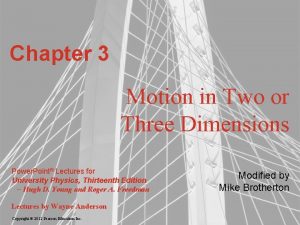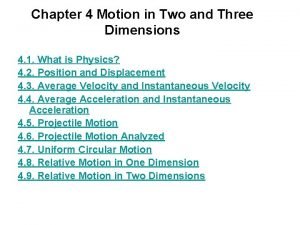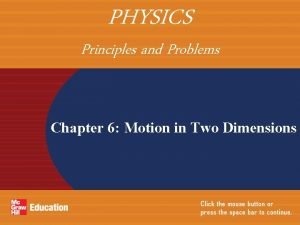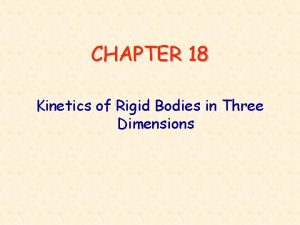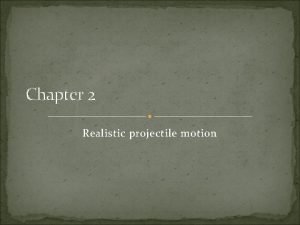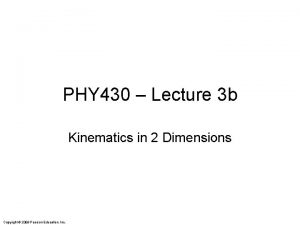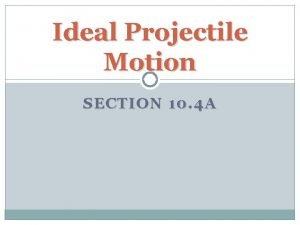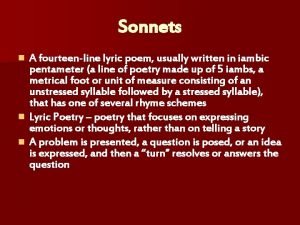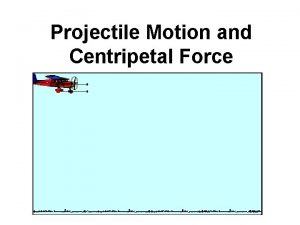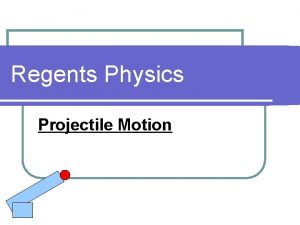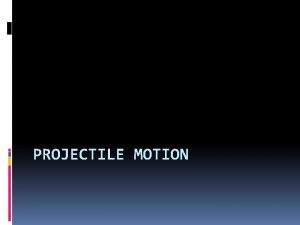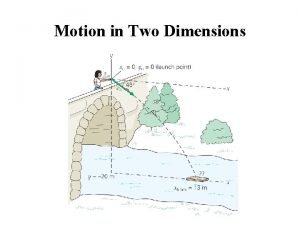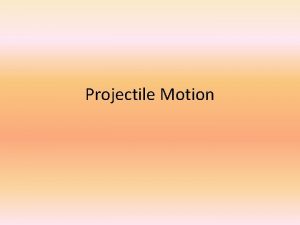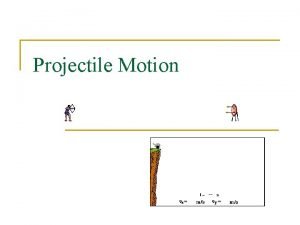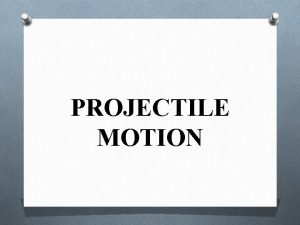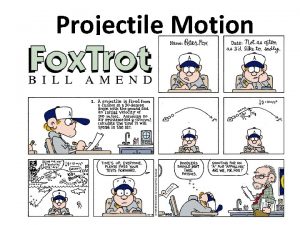Motion in 2 Dimensions Projectile Motion A projectile















- Slides: 15

Motion in 2 -Dimensions

Projectile Motion A projectile is given an initial force and is then (assuming no air resistance) is only acted on by gravity. The path it takes is called the trajectory. Path is a parabolic shape.

Horizontal Projectiles Horizontal - cause is due to the throw or movement. vh is constant. The force only acts for an instant. No force = no acceleration. dh = vht

Vertical - force acting on the object is only gravity. vv changes because gravity is acting on the object. dv = vit + 1/2 gt 2 Time is interchangeable between horizontal and vertical directions

Motion Map

Practice A ball is rolled horizontally off of a flat roof. It hits the ground 2. 3 m away from the wall. If the ball was in the air for 1. 2 seconds, what was the horizontal velocity of the ball just before it rolled off of the roof? How tall was the roof?

Projectiles Launched at an Angle o When launched at an angle the projectile has an initial vertical component as well as a horizontal component. o 1 st step should be to find the components of the velocity vector. o These act independently from each other o Solving for maximum height use half of the trajectory o vertical velocity = 0 and t = 1/2 total t o Range - how far the object travels horizontally. o Flight Time (hang time) - the total time the object is in the air.

Motion Map Vertical Velocity Horizontal Velocity Vertical Acceleration and Fg

Maximum Range • A projectile will have the maximum range when it is fired at an angle of 450 • Two angles that are the same value away from 45 will have the same range. • EX 30 and 60, 10 and 80 • Animation 1

Practice • A ball is launched with an initial velocity of 4. 47 m/s at an angle of 66 o above the horizontal. • a) What is the maximum height the ball attained? vvi=visin vvi=4. 47 m/s sin(66) = 4. 08 m/s vh=vicos vh=4. 47 m/s cos(66) = 1. 81 m/s

We need to know how long the ball takes to reach its maximum height. vvf=vvi + at 0 = 4. 08 m/s + (-9. 8 m/s 2)t t =. 416 s Now we know how long it takes to reach maximum height. dv = vvit + 1/2 gt 2 dv = (4. 08 m/s)(. 416 s) + 1/2(-9. 8 m/s 2)(. 416 s)2 dv =. 849 m

£How long does it take to return to the height it was launched from? (total time) Time to max height = 0. 416 s Total time = 2 x 0. 416 s Total time = 0. 832 s

What is the range? • • Range(R) = dh dh = vht R = (1. 81 m/s) (. 832 s) R = 1. 51 m

#2 £A soccer player kicks a ball into the air at an angle of 36 degrees. The initial velocity is 30 m/s. ¤How long is the ball in the air? ¤What is the horizontal distance traveled by the ball? ¤What is the maximum height reached by the ball?

#3 £An arrow is shot at 30 degrees with a velocity of 49 m/s and hits a target. ¤What is the maximum height attained by the arrow? ¤The target is at the height the arrow was shot from. How far away is the target?
 Chapter 6 motion in two dimensions
Chapter 6 motion in two dimensions Chapter 6 motion in two dimensions
Chapter 6 motion in two dimensions Motion in two or three dimensions
Motion in two or three dimensions Motion in two and three dimensions
Motion in two and three dimensions Motion in two dimensions quick check
Motion in two dimensions quick check Physics: principles and problems chapter 6 answers
Physics: principles and problems chapter 6 answers Rigid body kinetics
Rigid body kinetics Motion diagram physics
Motion diagram physics Chapter 6 study guide motion in two dimensions
Chapter 6 study guide motion in two dimensions Projectile motion equations
Projectile motion equations Projectile motion equations
Projectile motion equations Projectile motion definition
Projectile motion definition Vertical projectile motion
Vertical projectile motion Formula for projectile motion
Formula for projectile motion Gerak parabola bidang miring
Gerak parabola bidang miring A 14 line lyric poem is called
A 14 line lyric poem is called
